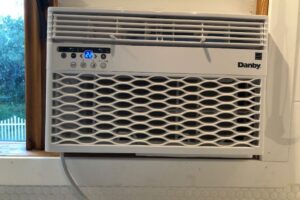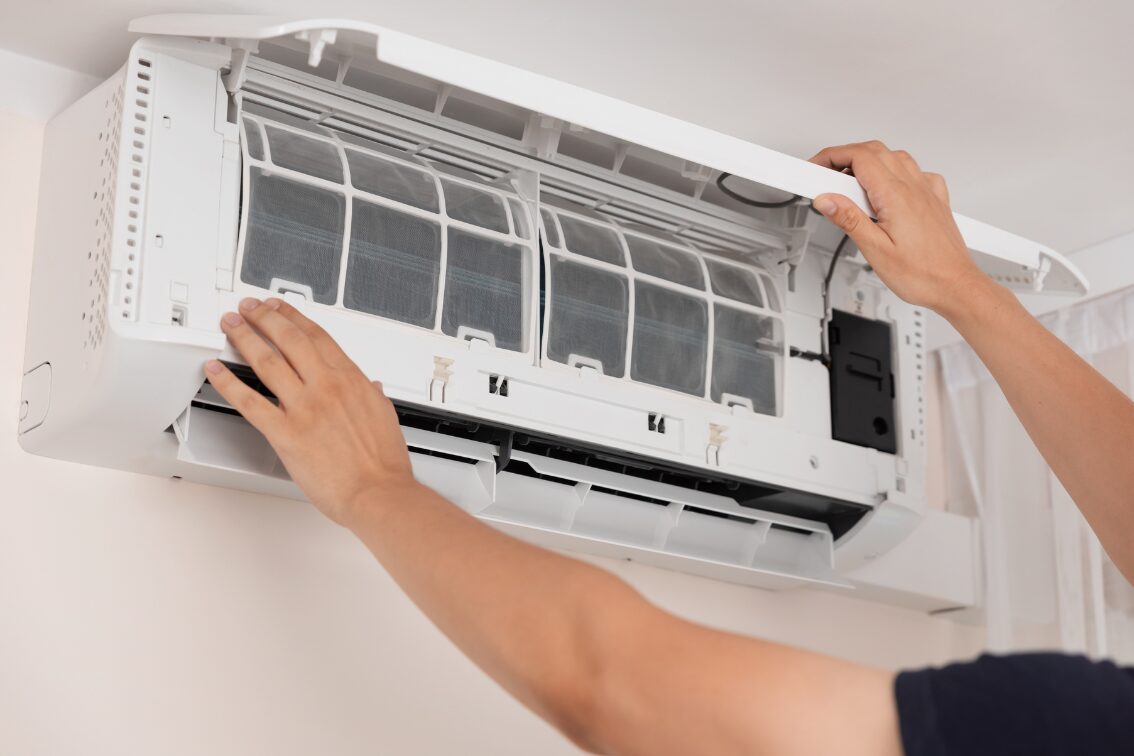*This post may contain affiliate links for which I earn commissions.*
How Air Conditioners Work: A Simple Guide to Keeping Cool
Air conditioners are something most of us can’t imagine living without, especially during those blazing hot months. But have you ever wondered how they work to keep you cool? It’s actually a bit like magic, powered by science!
In this post, I’ll break down the basics of air conditioners in a way that’s easy to understand. We’ll cover the main components of an air conditioner, how they work together to cool your space, and some practical tips for keeping yours in top shape. Let’s dive in and explore the simple science behind staying comfortable with air conditioning.
The Science Behind Air Conditioning
At its core, air conditioning is all about heat transfer. Think of it like this: your air conditioner isn’t creating “cold” air out of nowhere. Instead, it’s working to remove heat from your indoor air and release it outside, leaving the indoor air much cooler.
This process is called the refrigeration cycle and involves four main steps:
- Evaporation: Imagine a sponge soaking up water. Similarly, the evaporator coil inside your air conditioner “absorbs” heat from the indoor air. This coil contains refrigerant—a special liquid that turns into a gas as it picks up heat.
- Compression: Next, the gaseous refrigerant moves to the compressor (in the outdoor unit). Here, it’s squeezed and pressurized, which actually heats it up even more.
- Condensation: The hot, high-pressure gas then travels to the condenser coil (also outdoors). Here, it cools down as it releases the captured heat into the outside air, turning back into a liquid in the process.
- Expansion: Finally, the refrigerant flows through an expansion valve, dropping in pressure and cooling down as it returns to a low-pressure liquid. Now it’s ready to absorb more heat inside, and the cycle continues.
In a nutshell, your air conditioner is always working through these steps: absorbing heat indoors, moving it outside, and repeating. This cycle keeps your space refreshingly cool even when the outdoor temps are sky-high!
Key Components of an Air Conditioner
Now that we know how the cooling cycle works, let’s take a closer look at the main parts that make it happen. Each component plays an important role in this process, and understanding them can also help if you ever need to troubleshoot a problem.
- Compressor: Think of this as the “heart” of the system. The compressor, located outside, pumps the refrigerant through the system and compresses it to a high-pressure gas, ready to release heat in the next step.
- Condenser Coil: Also found in the outdoor unit, the condenser coil is where the refrigerant releases the heat it absorbed from inside your home. Here, the refrigerant turns back into a liquid.
- Evaporator Coil: Inside your home, typically in the air handler or furnace, the evaporator coil absorbs heat from the air passing over it, making the air feel cooler as it’s recirculated into your space.
- Expansion Valve: This small but crucial part allows the liquid refrigerant to expand, lowering its pressure and temperature so it can absorb heat all over again.
- Refrigerant: This special fluid cycles between liquid and gas states, which allows it to absorb and release heat effectively. It’s often called the “lifeblood” of the air conditioner.
- Fans and Blowers: Fans move air over the evaporator coil to cool it down indoors and over the condenser coil to release heat outdoors. These keep the air flowing and the temperature regulated.
Each part plays a specific role to keep your air conditioner running smoothly. And the better you understand these components, the easier it will be to notice if something’s wrong or in need of a fix.
The Cooling Cycle: Step-by-Step
Now that we know the main parts, let’s walk through the cooling cycle in more detail. I’ll keep it simple so you can see how everything works together to cool your space.
- Absorbing Heat Indoors: The indoor fan pulls warm air from your space and pushes it through the evaporator coil. Here, the refrigerant absorbs the heat and turns into a gas, cooling the air.
- Compressing the Refrigerant: The refrigerant gas moves to the outdoor compressor, which pressurizes it, raising its temperature.
- Releasing Heat Outdoors: The hot refrigerant then travels to the condenser coil. The outdoor fan blows air over the coil, releasing the heat outdoors and allowing the refrigerant to turn back into a liquid.
- Cooling the Refrigerant: The cooled refrigerant flows through the expansion valve, lowering its pressure and cooling it down even more.
- Starting Again: Finally, the refrigerant is ready to absorb heat again, repeating the process and keeping your indoor air consistently cool.
Pretty fascinating, right? This cooling loop repeats again and again, keeping your air conditioner working to maintain a comfy indoor environment.
Types of Air Conditioners
Air conditioners come in several types, each designed for different spaces and needs. Here’s a quick overview to help you decide which one might be best for you:

- Window Units: Perfect for cooling a single room, window units are compact and fit directly in a window. They’re affordable and easy to install but can be noisy and block some natural light.
- Split Systems: These include both an indoor and outdoor unit. Split systems are quieter and more efficient, making them ideal for cooling multiple rooms. Multi-split systems can connect several indoor units to a single outdoor unit.
- Portable Units: These floor-standing units can be moved from room to room as needed. A hose needs to vent through a window to release hot air. They’re a good temporary option but tend to be noisier than other types.
- Central Air Systems: Central AC is the go-to for cooling an entire home. It uses a system of ducts to circulate air throughout, keeping all rooms at a consistent temperature. It’s efficient but more complex and costly to install.
Choose the best type based on your needs, room size, and budget. A window unit might be perfect for a small room, while central air is ideal for a larger home.
Tips for Maintaining Your Air Conditioner
A little regular maintenance can make a big difference in how well your AC works. Here are a few easy tips to help keep your air conditioner running efficiently:

- Change the Filters: A dirty filter blocks airflow, making the system work harder. Check and change your filters every 1-3 months to keep things running smoothly.
- Clean the Outdoor Unit: Clear away leaves, dirt, and debris around the outdoor unit. This helps airflow and prevents overheating.
- Check for Refrigerant Leaks: If your AC isn’t cooling as well, you may have a refrigerant leak. If you notice issues, call a professional for a check-up.
- Seal Up Your Home: Proper insulation and sealing around windows and doors help keep cool air inside and hot air outside. This reduces the load on your AC and can save on energy costs.
- Schedule Yearly Maintenance: A yearly professional check-up can catch small issues before they become big problems, keeping your AC in top shape and extending its lifespan.
Taking care of your AC can save you money and help avoid those uncomfortable breakdowns on hot days. Plus, a well-maintained air conditioner runs more efficiently, which is better for both your wallet and the environment!
Final Thoughts
Understanding how air conditioners work can help you use them more effectively and keep them in good condition for longer. From the science behind heat transfer to the key components and types of air conditioners, I hope this guide has made things a bit clearer—and maybe even sparked a little curiosity!
🙋♀️ If you have any questions or tips for keeping cool, I’d love to hear from you in the comments below! Staying cool doesn’t have to be complicated, especially with a little know-how and regular maintenance.

